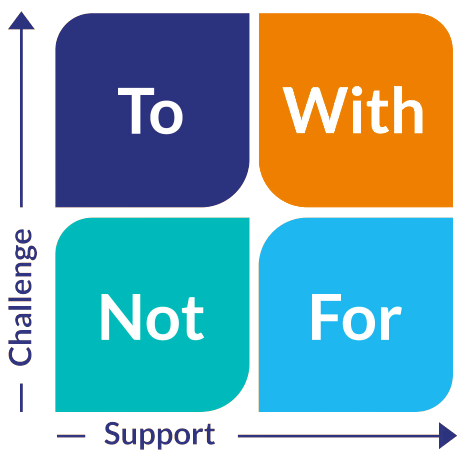
Setting high expectations and managing behaviour is one of the most important skills a teacher can develop as it sets an atmosphere of mutual respect and trust, and demonstrates to students that we believe in their abilities.
Student Behaviour in Schools
Research conducted by Tom Bennet with the Department of Education in 2017, found that the way students behave in school is strongly correlated with their eventual outcomes. When behaviour improves in general at a school, students achieve more academically and socially, and staff satisfaction improves, resulting in higher retention and less problematic recruitment. He found that successful schools had some features in common.
Successful schools had these in common:
- visible leaders
- detailed expectations
- clarity of culture
- high staff support
- consistent practices
- staff engagement
- attention to detail
- and all students matter
There are many different approaches to managing behaviour and we will explore two of them here: the warm/strict approach and restorative practice.
Strategies for Managing Behaviour
What is the warm/strict approach to behaviour?
Warm/Strict is a strategy that became popular after the publication of Doug Lemov’s book ‘Teach Like a Champion’ in 2015, but there has also been a great deal of research, conducted by Wubbels (2013) which suggests that teachers who combine maintaining high expectations for learning with ‘friendly’ characteristics achieved some of the greatest learning outcomes for their pupils.
Lemov proposes that being warm and strict are not two opposing concepts, but can be used together instead to greater effect.
The approach states that teachers can be warm to students through using kind words, a calm tone and positive body language, while also sticking rigidly to school or classroom rules and expectations and not making exceptions to the rules that are in place.
High Expectations + Friendly Characteristics = Great Outcomes for Learners!
- Wubbels 2013
The rationale for this approach is that it is essential for students to understand how to handle an environment that is strict in rules and policies at an early age, so that when they are older, it will not come as a surprise to them.
It is the teacher’s responsibility to show them kindness and care while still standing firm, so they can be prepared for the future.
Warm:
kind words,
calm tone,
positive body language
Strict:
sticking to the rules rigidly,
high expectations,
no exceptions
Warm/Strict behaviour strategy examples
The warm/strict approach in the video above sees kindness and strictness as reinforcing, not undermining, one another and schools that adhere to this approach take a more zero-tolerance approach to infringement of the school rules, as this creates a consistency across the school and students know the consequences of their actions, as it is fixed and unchanging.
Advocates of the approach also claim that as the policies are systemised, it is much easier for them to be picked up by new staff and for them to apply them successfully. They also posit that managing behaviour is not down to the individual teacher, it is a whole-school endeavour, which all staff can be trained to manage if given the right tools.
The teacher in the video employs the warm/strict strategy ‘strong voice’ to demonstrate to her pupil that he was not paying attention.
Warm/Strict behaviour strategies for the classroom
Warm/strict strategies which can be used and adapted in any classroom:
1. Target the behaviour, not the person
Focus on the negative behaviour the student is exhibiting and not on them personally. By being specific about what they were doing, this will help the student consider what they were doing and what they need to do to improve their behaviour.
2. Explain the reason for the consequence
The first step is to explain decisions and actions to pupils. It is not acceptable for teachers to tell their pupils to do something because they ‘said so’ as pupils need to know why, so that they know what the expectations in the classroom are. When pupils understand the logic and reasoning of decisions, they are less likely to be defiant.
When teachers have pre-empted student behaviours that may cause disruption in the classroom and can explain why they are unacceptable, a platform for expectations is embedded in the routines of the classroom.
3. Communicate in a calm and warm manner
Teachers need to model calmness, warmth and consistent language to pupils. Although this approach means strict rules and clearly enforced consequences, these can also be accompanied with warm human interaction and good manners. The message teachers are trying to communicate to pupils is that there are strict rules because they care about things being fair and want them to do well.
4. Demonstrate that the consequence is temporary
Every lesson is a fresh start and students need to be given the opportunity to change their behaviour.
Restorative Practice
What is Restorative Practice?
Restorative practice is an underpinning ethos that schools can have, which focuses on building and maintaining positive and healthy relationships. Rather than a zero tolerance, compliance approach, restorative practices promote a range of approaches which help to manage conflict and tensions and mend relationships when they break down.
The approach aims to be inclusive and seeks to transform a range of behaviours - not just those exhibited by children, but also those by adults too. This involves a relational shift, which needs to be systematic in order to create a secure and safe environment which improves the emotional wellbeing of all in the school community, including parents.
With restorative practices, students are protected and safeguarded, but they are also taught to be responsible and feel empowered that they are willing to act in the right way for the right reasons. It proactively seeks to develop a sense of community in a school by moving towards more of an interpersonal process, where there is a culture of shared responsibility and problem solving.
Restorative Approach = High Support and High Challenge = doing things WITH people
“A restorative school is so much harder to create than a culture of compliance. Compliance is easy, encouraging as it does an abnegation of responsibility by both parties. ‘Follow the rules or I’ll kick you out’ is easy to say. ‘Fine, I don’t want to do what you say, so I’ll be kicked out’ is easy to do. But here we miss an opportunity to create something better.”
Implementing Restorative Practice in the classroom
As you can see from this video from Mark Finnis, sometimes restorative practice is confused with restorative justice but, although there are similarities between the two approaches, restorative practice is more of a framework that schools can use to hang their practices of behaviour management from. One of the crucial tenets of restorative practice is the idea that relationships underpin everything, what Mark Finnis refers to as ‘connection before content.’
Advocates of this behavioural approach believe that students will follow routines and rules more effectively if they feel like they are having things done with them, rather than to them, as they feel a sense of ownership and empowerment.
 In the video, Finnis described the ‘Four Ways’ of restorative practice (see model displayed). This model demonstrates that a restorative approach requires a balance of challenge, where limits, boundaries and expectations are clear and also a high level of support, where students are nurtured, encouraged and listened to.
In the video, Finnis described the ‘Four Ways’ of restorative practice (see model displayed). This model demonstrates that a restorative approach requires a balance of challenge, where limits, boundaries and expectations are clear and also a high level of support, where students are nurtured, encouraged and listened to.
The 'Four Ways' model explains further: 'The underlying premise of Restorative Practices rests with the belief that people will make positive changes when those in positions of authority do things WITH them rather than TO them or FOR them.
'According to the Social Discipline Window, a restorative approach requires a balance of high levels of CHALLENGE (things like setting limits, boundaries, expectations, clear bottom line and consequences) with high levels of SUPPORT (things like encouragement, nurture, compassion, empathy and listening).'
Developing a restorative mindset means that teachers recognise that all exhibited behaviours are nothing more than an unmet need and that the skill of a teacher involves uncovering what those needs are in order to successfully manage the behaviour.
Rewards and Sanctions
An effective behaviour policy sets explicit standards and the rewards and sanctions system promotes positive behaviour and regular attendance. The behaviour policy and the rewards and sanctions system are essential foundations for a creative learning and teaching environment.
Rewards and sanctions are likely to be effective if:
- they are based on robust principles in the school’s behaviour policy;
- they are not an end in themselves and not the main means of promoting positive behaviour or addressing inappropriate behaviour;
- they set clear standards and expectations that have a purpose and a role in the overall strategy agreed by the school community and communicated to everyone;
- their purpose relates to improving behaviour for learning, with pupils achieving changes in their behaviour and taking responsibility for their actions.
View this video from behaviour expert John Bayley, about the issues with rewards and sanctions.
Consider:
- What does John say some of the challenges with using rewards and sanctions effectively may be?
- How might this impact your own practice?
Behaviour Learning Strategies
If you want to learn more about behaviour strategies and effectively bridge the gap between theory and practice, log into your IRIS Connect account and view our Teaching Technique Guides.
Our behaviour-focused Technique Guides give you clear, step-by-step strategies for creating calm, orderly classrooms where learning can thrive. You can explore practical approaches such as:
- Establishing consistent routines and expectations
- Giving clear, concise instructions
- Using positive reinforcement to encourage desired behaviours
- De-escalating challenging situations quickly and calmly
References, bibliography and recommended reading:
- Caldarella, P., Ross, A. A., Larsen, L.W.,, Kade, R., Downs, H.P., Wills, J., Wehby, H. (2020) ‘Effects of teachers’ praise-to-reprimand ratios on elementary students’ on-task behaviour.’ Educational Psychology, 40(10), pp.1306-1322.
- Bennett, T. (2017) ‘Creating a culture: How school leaders can optimize behaviour.’ Available online at: Department for Education (publishing.service.gov.uk).
- Finnis, M. (2021) Independent Thinking on Restorative Practice. Carmarthen: ITL Publishing.
- Lemov, D. (2015) Teach Like a Champion. San Francisco: Jossey Bass.
- Wubbels, T. (2013) Interpersonal Relationships in Education : An Overview of Contemporary Research. Rotterdam: Sense Publishers.


Leave a comment:
Get blog notifications
Keep up to date with our latest professional learning blogs.